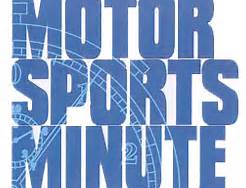Racing Versus Passing
- Updated: July 30, 2013
He may have been tired after running 400 miles at the Brickyard on Sunday. He might have been distracted by an unrelated question offered earlier during the post-race press conference that he described as “the worst question I’ve heard all week.”
But, whatever it was, Tony Stewart then went off on a rant about racing vs. passing that seemed to strike some members of the media as rather odd.
Question: “Anything NASCAR or IMS (Indianapolis Motor Speedway) can do to increase passing in these races?”
Stewart: “Look up ‘racing’ in the dictionary and tell me what it says, then look up ‘passing’.
“We’re racing here. That’s all I’m going to say. This is racing.
“If you want to see passing, we can go out on (Interstate-465) and pass all you want. If you can tell me that’s more exciting than what you see at IMS, the great racecar drivers that have competed here. This is about racing. This is about cars being fast. It doesn’t have to be two-three wide racing all day long to be good racing.
“Racing is about figuring out how to take the package you’re allowed and make it better than what everybody else has and try to do a better job with it.
“I’ve seen races that were won (by) over a lap. I’ve seen 20-second leads here. For some reason in the past 10 years, everybody is on this kick that you have to be passing all the time. It’s racing, not passing. We’re racing.
“It’s taking machines that are pretty even package-wise and let the drivers and teams figure out how to make the difference. I don’t understand where this big kick has come from….When somebody does a good job; everybody hates that. I don’t understand that. It baffles me as a race driver.”
Sooo what did he mean?
Most of what he said about ‘racing’ is true. Teams figuring it out. Doing a better job than the other group and proving it on the track.
But fans shouldn’t get excited about passing?
How should you win unless you start on the pole and never give up the lead?
Track position is the big buzz word at races such as Indianapolis. Fairly flat, narrow tracks that have tight corners and one groove don’t allow much opportunity to pass.
Some call racing nose-to-tail a ‘parade” when track conditions don’t allow “passing.”
Passing the other guy in the pits during a stop, or waiting for someone to drop out who’s ahead of you isn’t what most fans would call the most exciting moment of the race.
Ryan Newman’s crew made a decisive call on their final pit stop-two tires instead of the four that Jimmie Johnson’s crew gave him a lap earlier. That, coupled by what Johnson described as a pit “mistake”, gave them enough of a margin when racing resumed to secure his popular victory.
Good strategy? Yes.
Exciting? Not nearly as much as if the two had banged fenders and exchanged the lead a few times on the final lap with Kasey Kahne, Stewart and Matt Kenseth ready to make it five-wide at the flag.
Drivers talk about having a car fast enough to reach the leaders but not being able to get around them.
“Catching them is one thing, but passing is something else.”
Sunday’s Brickyard 400 saw literally every change for the lead accomplished either by one team getting faster service than another when making a stop, or by one car inheriting the lead when the previous leader pitted.
Interesting strategies? Certainly.
Exciting on-track action? Not really.
Attendance at the Brickyard event has plummeted from an estimated 250,000 at its inaugural race in 1994, to, some thought, 70,000 on Sunday.
“Tony, is there anything NASCAR or IMS can do to increase passing in these races?”
We hope so-and soon. ‘Racing’ doesn’t seem to be doing it.
Paul Gohde heard the sound of race cars early in his life.
Growing up in suburban Milwaukee, just north of Wisconsin State Fair Park in the 1950’s, Paul had no idea what “that noise” was all about that he heard several times a year. Finally, through prodding by friends of his parents, he was taken to several Thursday night modified stock car races on the old quarter-mile dirt track that was in the infield of the one-mile oval -and he was hooked.
The first Milwaukee Mile event that he attended was the 1959 Rex Mays Classic won by Johnny Thomson in the pink Racing Associates lay-down Offy built by the legendary Lujie Lesovsky. After the 100-miler Gohde got the winner’s autograph in the pits, something he couldn’t do when he saw Hank Aaron hit a home run at County Stadium, and, again, he was hooked.
Paul began attending the Indianapolis 500 in 1961, and saw A. J. Foyt’s first Indy win. He began covering races in 1965 for Racing Wheels newspaper in Vancouver, WA as a reporter/photographer and his first credentialed race was Jim Clark’s historic Indy win.Paul has also done reporting, columns and photography for Midwest Racing News since the mid-sixties, with the 1967 Hoosier 100 being his first big race to report for them.
He is a retired middle-grade teacher, an avid collector of vintage racing memorabilia, and a tour guide at Miller Park. Paul loves to explore abandoned race tracks both here and in Europe, with the Brooklands track in Weybridge England being his favorite. Married to Paula, they have three adult children and two cats.
Paul loves the diversity of all types of racing, “a factor that got me hooked in the first place.”




![Porsche Fabcar crosses the finish line. [Robert Madara photo]](https://racingnation.com/wp-content/uploads/2023/11/FabcarFinish-108x70.jpeg)

![USF2000 Pro driver Lindsay Brewer. [Eddie LePine Photo]](https://racingnation.com/wp-content/uploads/2023/06/IMG_8825_2-108x70.jpg)